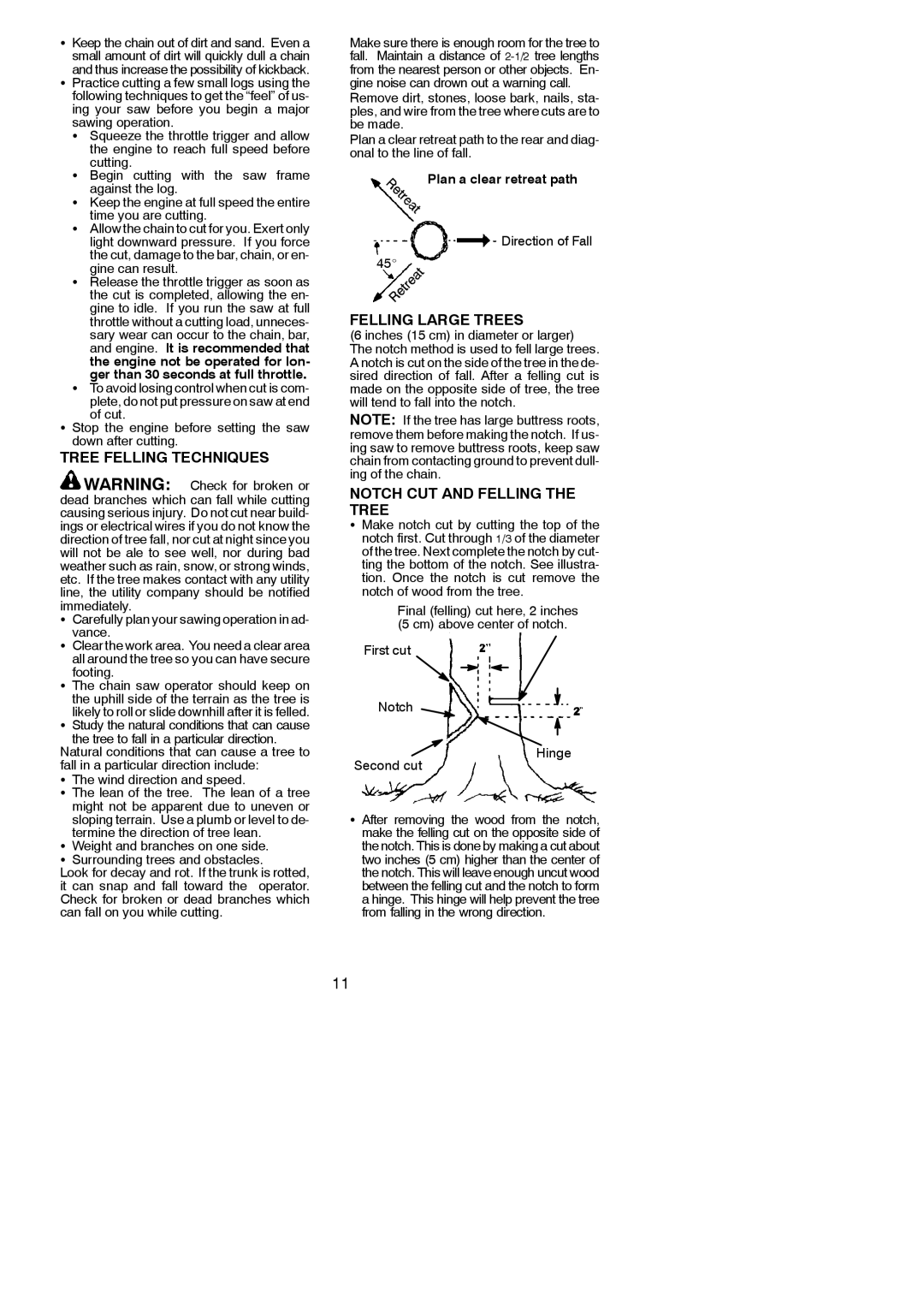BH2160 LE specifications
The Poulan BH2160 LE is a versatile and robust hedge trimmer designed for homeowners and landscaping professionals alike. As part of Poulan’s esteemed line of outdoor power equipment, the BH2160 LE delivers outstanding cutting performance, making it an essential tool for maintaining your garden and yard.One of the standout features of the BH2160 LE is its powerful 24cc, 2-cycle engine. This engine offers an impressive balance of power and efficiency, enabling users to tackle thick and dense hedges with ease. The lightweight design of the trimmer, combined with its ergonomic handle, ensures comfort during extended use, reducing fatigue and allowing for precise maneuverability.
The BH2160 LE is equipped with a 22-inch dual reciprocating blade, designed for efficient and smooth cutting. The sharpened cutting edges of the blades provide a clean cut, promoting healthy growth in hedges and shrubs. One notable technology incorporated into the design is the anti-vibration system, which minimizes vibrations transmitted to the operator, thus enhancing comfort during operation.
Another key characteristic of the Poulan BH2160 LE is its availability with an adjustable handle. This feature allows users to customize their grip position according to their personal preference and the nature of the task at hand. Additionally, the trimmer’s built-in blade guard adds an extra layer of safety, protecting both the user and the blades from damage during storage and transportation.
For ease of use and maintenance, the BH2160 LE comes with a tool-less air filter access feature. This innovation simplifies filter cleaning and replacement, extending the lifespan of the engine and ensuring optimal performance. Moreover, the model features a fuel tank designed for easy refueling and minimizes the risk of spills.
Overall, the Poulan BH2160 LE is a powerful, user-friendly hedge trimmer that combines efficiency with comfort. Its advanced engine technology, sharp dual blades, and ergonomic design make it a dependable choice for those looking to maintain their outdoor spaces. Whether tackling overgrown hedges or shaping ornamental shrubs, the BH2160 LE offers reliability and power suitable for a variety of gardening tasks.

